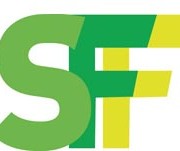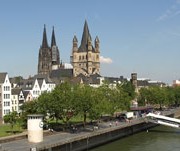Winner of the Cactus 2011, Suzanne Furstner Foundation Scholarship, talks about her CELTA course.
Suzanne Furstner Scholarship 2011 – Winner’s Review
It was a Friday evening when I was sitting in the library with some of my colleagues, after having worked non-stop all week. We were researching for an assignment, furiously reading and taking notes, when from behind a tall stack of books a voice calmly stated that at that moment, the rest of the world was probably enjoying a cold beer and some well-deserved R & R. We barely entertained the idea, concluding that whilst it was attractive we had our work cut out for us, and so we dropped our eyes back to the books, saving our cervesas for another day. Such is the life of a CELTA trainee.
 In February 2012, I attended the Cambridge CELTA course at International House Barcelona, one of the most reputable teacher training centres in the world. Made possible by the generosity of Cactus TEFL’s Suzanne Furstner Scholarship, the course was a rich and rewarding experience for me. Four-weeks of full-time training was made up of input sessions (a sort-of mix of workshops and lectures) and teaching practice, with the evening hours dedicated to lesson planning and completing written assignments. I received continuous support and direction from the course tutors, each of whom brought to the training room their years of teaching experience.
In February 2012, I attended the Cambridge CELTA course at International House Barcelona, one of the most reputable teacher training centres in the world. Made possible by the generosity of Cactus TEFL’s Suzanne Furstner Scholarship, the course was a rich and rewarding experience for me. Four-weeks of full-time training was made up of input sessions (a sort-of mix of workshops and lectures) and teaching practice, with the evening hours dedicated to lesson planning and completing written assignments. I received continuous support and direction from the course tutors, each of whom brought to the training room their years of teaching experience.
My class of 18 CELTA candidates was made up of individuals from the UK, the EU, the USA and Ireland, with me, the Australian, being the furthest from home. Some of my classmates were preparing to enter the workforce for the first time, whilst others were looking for a change in career and lifestyle. The training room was a fun learning environment from Day One, when an ongoing impromptu comedy routine was birthed due to an unusually high number of witty personalities in our group.
My expectations of the course had been set-up by a friend in London who had earlier completed his CELTA, and whose forewarning of long days and an intense transformation period proved to be true. I had experienced teaching English for a short stint before the course and was acutely aware of my need for quality training. I found the CELTA methodology to be both stretching and awakening, and unlike other candidates without prior experience I had to unlearn a few bad habits and replace them with ‘new and improved’ techniques.
An example of an area of learning for me was with regards to developing flexibility in the role of teacher. I devoted a lot of time to preparing my lessons, and sometimes the lessons didn’t go according to plan, either because of an aspect I had overlooked in my planning or because of a class dynamic which effected a change in direction. This experience taught me to ‘let go’ a bit as a teacher, to be guided by the students and to allow and encourage organic developments to occur. It taught me that being prepared for a lesson is equally as important as being ready to respond to its natural flow and momentum.
At the completion of the course, our group enjoyed dinner together at a restaurant to celebrate our success and hard work. A few of my classmates shared how they questioned if teaching English was the job for them, because in a course of such intensity you really have to work relentlessly from woe to go. However to live the CELTA as your every day life would be impossible; it’s an intensive training period crammed with all the content and practice you need to start working. The course is challenging but the end result is worthwhile; teaching is a rewarding and fun job that helps others, and having a CELTA opens up doors to employment in many countries around the world. As for me, I came to Barcelona exclusively to attain the CELTA, and five months later, I’m still here, nurturing my love of coffee and drinking in the beauty of this city. And when I’m not riding my bike or trying to improve my Spanish, I’m in the classroom, teaching English.
Cactus TEFL is an admissions and advice service for quality teacher training courses worldwide. Cactus works with well-known course providers to offer CELTA, TESOL, equivalent and online courses in over 90 locations across 36 countries. Cactus TEFL also offers free post-course careers advice and support, as well as access to our very own TEFL jobs board and job alerts. The next Suzanne Furstner Scholarship will be in 2016.


